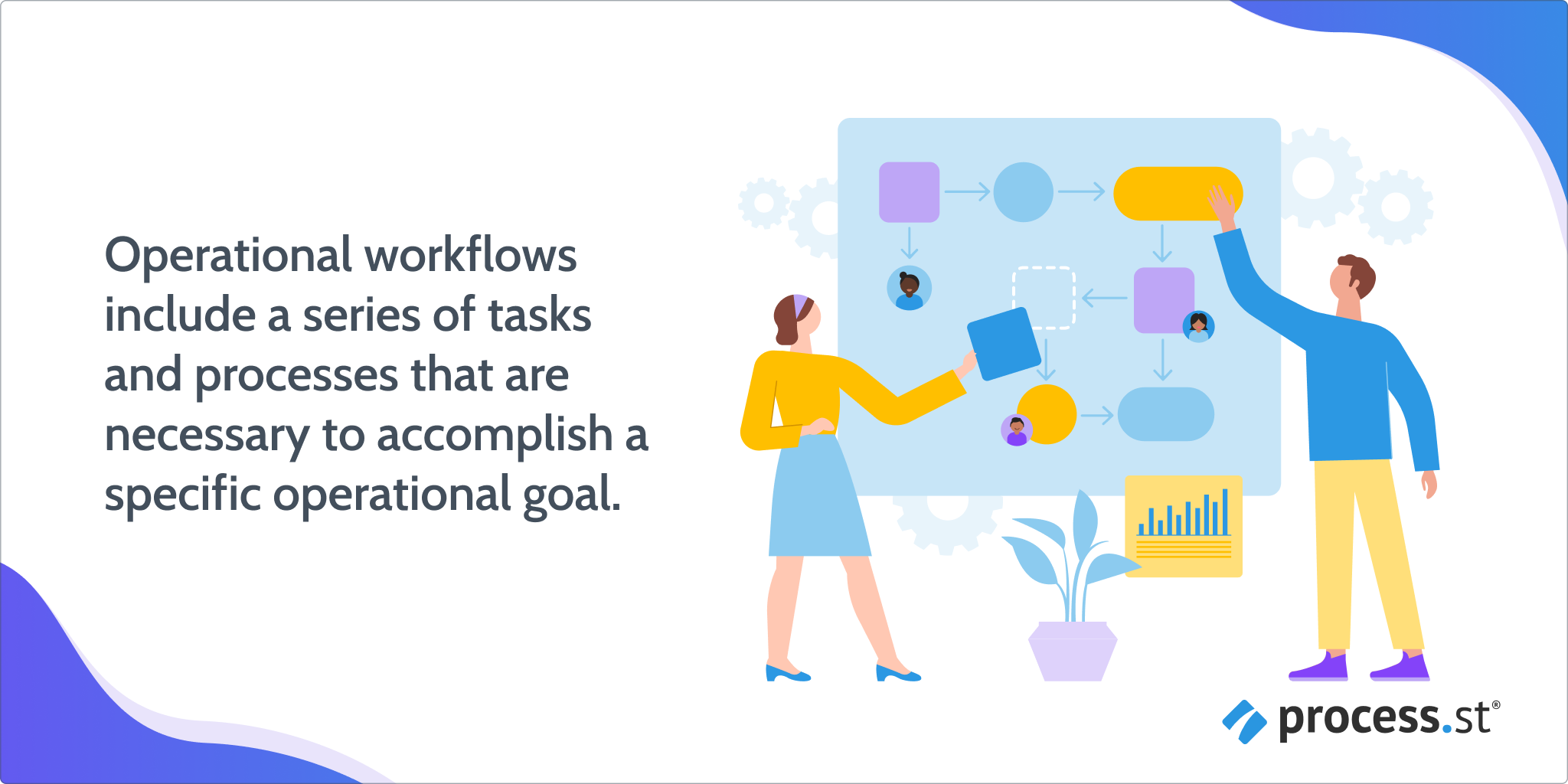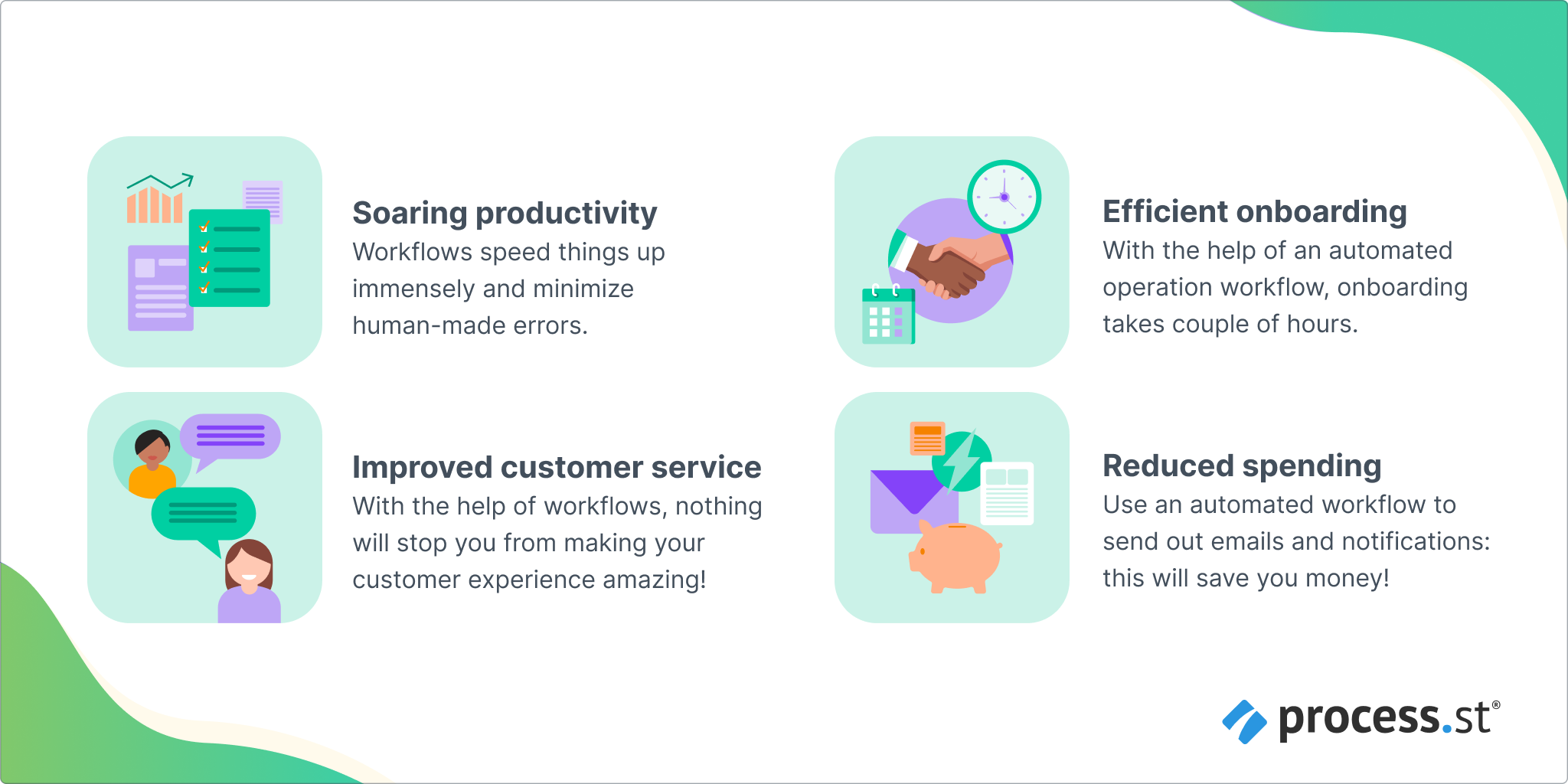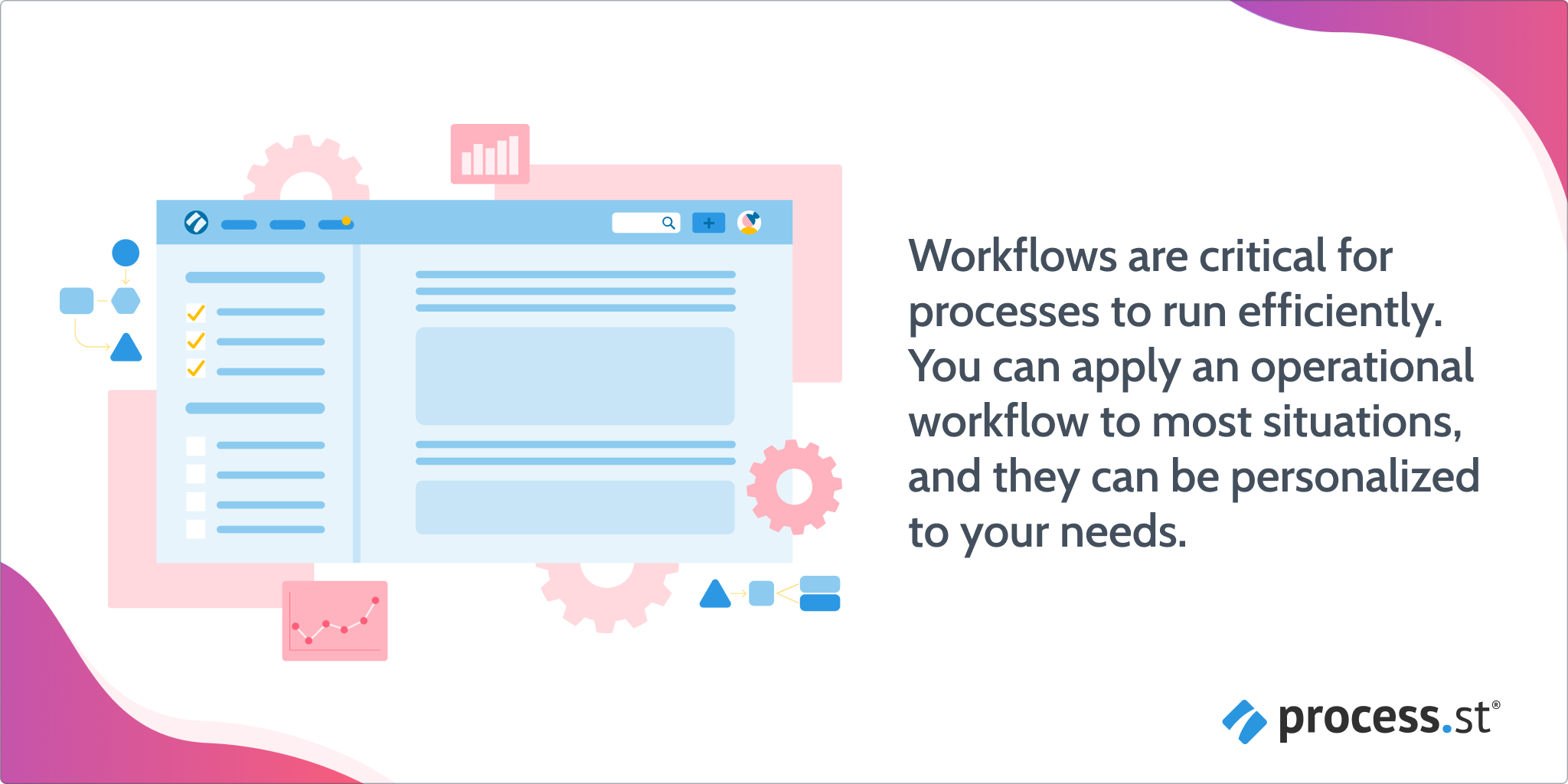Get started quickly, see results immediately, no code needed.
How to Achieve Business Success With Operational Workflow?
Are you debating whether an operational workflow is worth the money?
There’s nothing worse than buying costly software or a tool that ends up only taking up valuable space on your computer. If you won’t use it, why buy it?
It’s always wise to educate yourself about these things before deciding to purchase.
Hopefully, this guide will help you decide whether operational workflows are the right tools for you.
So, let’s dive in.
What is an operational workflow?
Handling real-time data analytics is something a lot of businesses struggle with.
Luckily, operational workflows can help.
They are used to define the order in which they must be completed to achieve the desired outcome.

In addition, these workflows are also capable of updating CRM records with real-time data.
Benefits of using an operational workflow
There are numerous benefits of using operational workflows in a business setting.
Let me talk you through the five most important ones:

1. Soaring productivity
Workflows aid in productivity increase.
Why? Because they reduce the time and resources required to complete a task.
Think of them as your allies in a constant manual data entry war.
Workflows speed things up immensely and minimize human-made errors.
The result? Your team’s productivity will skyrocket!
2. Improved customer service
You’ll provide faster and more reliable customer service, improving overall client satisfaction.
- Need to input customer data? You now have a workflow for that.
- Want to onboard a new client effectively? A workflow comes to the rescue.
- Customer abandoned their cart mid-purchase? Trigger a personalized email.
With the help of workflows, nothing will stop you from making your customer experience amazing!
3. Efficient onboarding
Workflows improve collaboration in HR departments. They promote communication and ensure everyone is working towards the same goals.
For example, let’s say you want to onboard new hires. To do this, you need to:
- Send out application forms
- Schedule orientation meetings
- Distribute onboarding materials
- Ask for feedback
If you were to do all this manually, it would take you days. With the help of an automated operation workflow, it’ll take you a couple of hours.
4. Reduced spending
Eliminating redundant tasks like manual data entry will save you time and money.
Instead of spending hundreds on expensive software, get a reliable workflow tool instead.
And if you cannot afford to hire an assistant at the moment, use an automated workflow to send out emails and notifications.
What are the main types of workflows?
There are several different types of workflow, each serving a different purpose in managing business processes.
Let’s take a closer look at the two main types of workflow.
Sequential workflow
A sequential workflow involves a series of steps, where each step depends on the completion of the previous step.
This type of workflow is often used for routine, repetitive tasks where the steps must be performed in a specific order.
Parallel Workflow
In a parallel workflow, multiple tasks are performed simultaneously, with each task working independently of the others.
This type of workflow can be utilized for tasks that can be completed in any order or tasks that require the input of multiple teams.
In addition to these two, there are also other ways to categorize workflows:
- Process workflow is comprised of a predictable, repetitive sequence of tasks or steps.
- Case workflow is used when the sequence of steps needed to complete the task is unknown at the start.
- Project workflow may be utilized when the steps proceed in a structured path similar to process workflow, but there is flexibility in when, how, and if all those steps must happen.
Why is operational workflow important in business success?
This is a very important question to ask prior to investing in a workflow software tool.
But the short answer to this is that workflows are critical for processes to run efficiently. They also:
- Facilitate collaboration between teams and departments
- Provide visibility into the status of each task, which allows you to track progress
- Help to identify potential roadblocks before they become major issues
- Ensure that all tasks are completed correctly and to a high standard
- Reduce the cost of labor, materials, and other resources required to complete a task
- Make your employees perform their tasks in the most efficient way possible
So, yes. Workflows are incredibly important in achieving success and streamlining business operations.
Operational workflow examples
Still not convinced that you need operational workflows?
Here are some examples of common workflow use cases. I’m sure some will be applicable to your business.
Employee Onboarding Workflow
A workflow that outlines the steps for bringing new employees on board.
For example:
- completing paperwork
- setting up accounts
- providing training
Here’s a free employee onboarding workflow.
Sales Order Processing Workflow
This workflow outlines the steps for processing sales orders.
For example:
- order confirmation
- payment processing and fulfillment
Here’s a free sales workflow.
Customer Support Workflow
Provides customer support.
For example:
- issue resolution
- customer follow-up
Here’s a free customer support workflow.
Project Management Workflow
Perfect for managing projects.
For example:
- scope definition
- task assignment
- progress tracking
Here’s a free project management workflow.
Procurement Workflow
This workflow outlines the steps for obtaining goods and services.
For example:
- vendor selection
- purchase order creation
- payment processing
Here’s a free purchase order workflow.
IT Helpdesk Workflow
Finally, a workflow that helps with managing IT support requests.
For example:
- ticket creation and resolution
Here’s a free IT helpdesk workflow.
The main points to remember
Implementing operational workflows into your business will:
– Streamline business processes
– Aid team communication
– Make work more efficient

So if you want your business to succeed long-term, investing in a workflow management system is a pretty good idea.







 Workflows
Workflows Projects
Projects Data Sets
Data Sets Forms
Forms Pages
Pages Automations
Automations Analytics
Analytics Apps
Apps Integrations
Integrations
 Property management
Property management
 Human resources
Human resources
 Customer management
Customer management
 Information technology
Information technology


